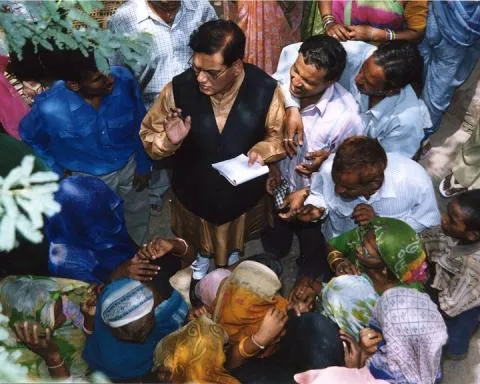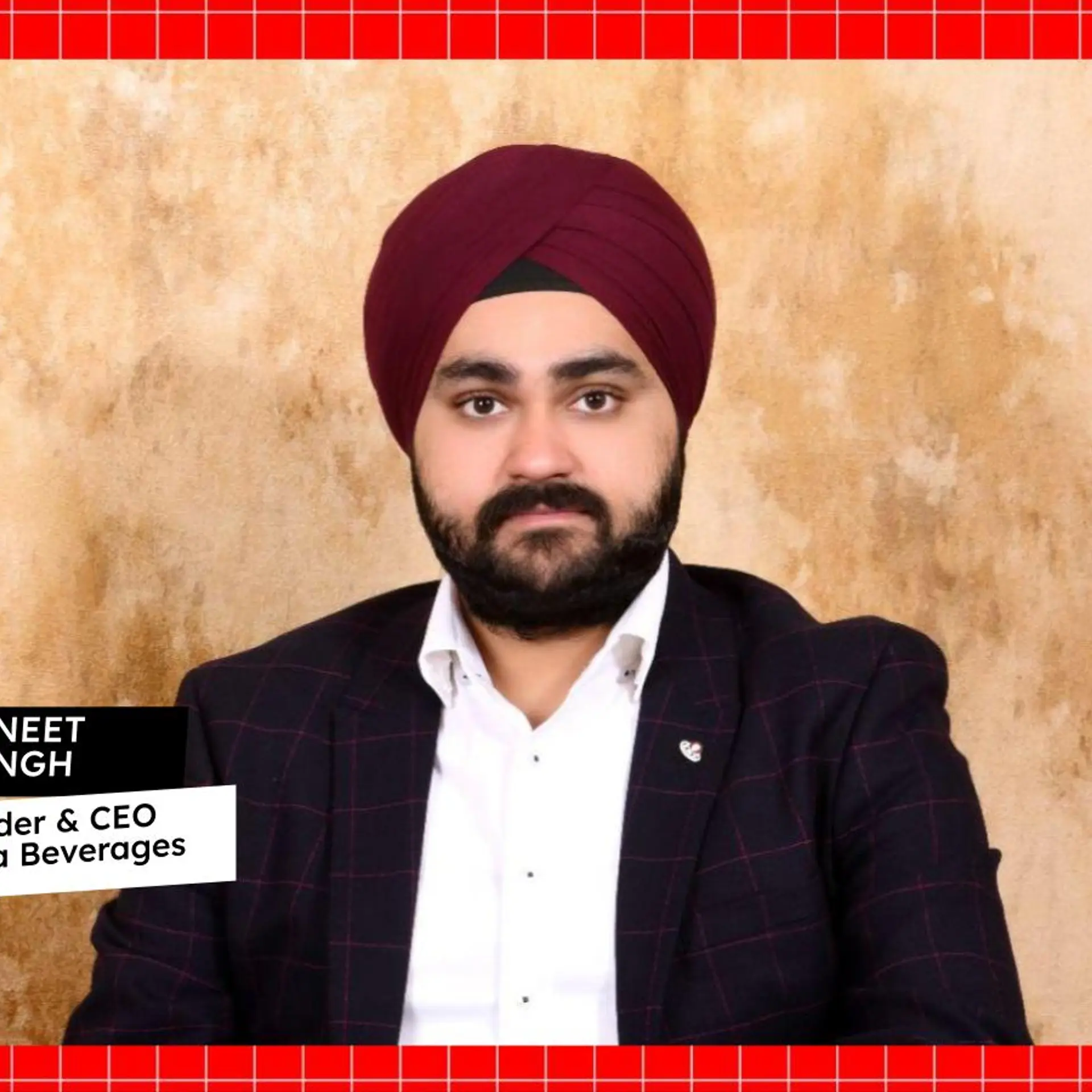Making Bharat Swachch since 4 decades, in conversation with the Sulabh Shauchalya man – Dr. Bindeshwar Pathak

‘Swachh Bharat’ is recent. ‘Millennium Development Goals (MDGs) are post Y2K. But there is a visionary, who started over 4 decades back. His resolve to uplift the lot of the scavenger (manual cleaners and carriers of human excreta) community, paved the way for the biggest sanitation wave in India and the world. Every Indian knows of Sulabh Shauchalaya, but not many know the story of the man behind the sanitation giant – Dr. Bindeshwar Pathak. The man has over 46 awards, 8 fellowships, and 5 memberships, some of which include the Padma Bhushan (1991), Stockholm water prize (2009), International Saint Francis Prize, UNEP Global 500 Scroll of Honour Award, the UN-Habitat Scroll of Honour, the list is endless.
First brush with the issue of untouchability
“When I was a boy, a lady used to come to my home to deliver bamboo objects. When the lady used to leave, my grandmother would sprinkle the entire house with holy water. I was curious about this lady. Many people used to come to our house, but my grandmother didn’t sprinkle water those times. I asked my grandmother and she said that the lady is untouchable and if I touch her, I would get polluted. My curiosity led me to touch the lady and I found no change in my body! My grandmother made a hue and cry and summoned the Pandit to come and tell the family of how we could overcome this crime. I was looked at as a criminal.” The Pandit came up with a solution.
“If you put cow dung in his mouth, cow urine to drink and make him bathe in the holy river (during winters), then he will be pure.” Young Dr. Pathak went through this ordeal and this was his first brush with the issue of untouchability in India.
I wanted to be a teacher
“I came first in my second year and got scholarship as well. But I took up criminology as a subject in my third year and could not do well in that paper. As a result, my total score dropped and I missed out on the opportunity of being a lecturer, which was my ambition.”
He then became a school teacher in a high school. The salary was low. “It wasn’t even $2 a month”, says Dr. Pathak. He then moved onto a business related to medicines for a year. He decided to go back to studying but destiny had other plans. “I believe in God and Destiny. I was travelling to get admission in Sagar University in Madhya Pradesh by train. I got down at Hajipur (Bihar) to have tea, and two persons came to me and told me about this amazing job with benefits. I abandoned my train journey and went to the place. The man-in-charge got up and said – ‘who told you there is a permanent job? This committee is only for 3 years, of which only 2 years are left’” With the vacancy at Sagar university gone, Dr. Pathak stayed back in Hajipur and took up this job where he just translated from Hindi to English and vice versa, that too without a salary!
In 1967, Rajendra Lal Das, a Sarvodaya Member appealed to him to align himself with the issues that Mahatma Gandhi felt strongly about – the social issues the scavenger community is fraught with and the ways to liberate them. “In Sociology, we were taught that if we want to understand a community, we have to be a part of them.” He decided to live in a scavenger colony in Bettiah district of Bihar for three months. A Brahmin staying in an untouchable community was a crime in the 60s’.
3 months that changed everything
“One day, I saw a newly-wed girl from the community, crying bitterly because her in-laws were forcing her to go to Bettiah town to clean toilets. I asked the mother in law – Why are you forcing her? The mother in law replied – What will she do anyway? If she sells vegetables, no one will buy from her.” Dr. Pathak says that this is one of the black spots in Indian history that if you have committed a crime, not a heinous one, you can be released from jail but Indian society is such that if you’re born an untouchable, you will die an untouchable and suffer with scant chance of escape.
Another incident of a boy dying because people refused to help the untouchable scavenger boy, hit Dr. Pathak deeply. Dr. Pathak’s father-in-law did not agree with Dr. Pathak’s ways. “He was a doctor, a rich man. I don’t want to see your face! Our culture is not such to reply to elders. But that day I said – Look, I have begun turning the pages of history of India and to fulfil the dreams of Mahatma Gandhi.”
“I then took a vow. I will fulfil the dream of Mahatma Gandhi. This is the beginning of the beginning of my whole journey”. He decided to liberate scavengers through low cost sanitation by inventing the twin pit pour flush model.

The Sulabh technology is very well explained in the manual by Sulabh International – “The Sulabh technology is a very simple device. It consists of two pits with sealed covers and a water seal. Both the pits are used alternately. After one pit fills, excreta is diverted into the second pit, keeping the first pit in a ‘rest period’ for 2 years, during which excreta converts to solid, odourless, pathogen-free manure. It can be dug out easily by the beneficiary and used as manure. This technology does not require manual cleaning of human excreta. This toilet was named Sulabh Shauchalaya, which could be adopted in different hydro-geological conditions with some precautions. The two-pit pour-flush toilet was successfully introduced in urban areas. It was found to be a safe and hygienic system for the disposal of human waste in the absence of sewers and septic tanks. Before his arrival on the scene nobody, including engineers, was ready to believe that this technology could work in urban areas.”
Then to Now
In 1973, he was given Rs. 500 to build two Sulabh Shauchalayas for demonstration in the compound of the Arrah Municipality, a small town of Bihar. Since then Sulabh Shauchalaya has converted about 1.3 million bucket toilets into Sulabh Shauchalayas throughout the country; and more than a million scavengers have been liberated with more than 640 towns made scavenging-free.
When I started in 1973, I was the only one, not just in India but the world. And in Bihar, when I went to talk about toilets, the man I was speaking to said – let’s talk after tea. How can we talk about toilets while having tea! This was the condition in Bihar that nobody wanted to talk about toilets.
“There was a meeting in the Bihar government, there were two officials, one the secretary of the department(now called urban development) and one was the administrator of Patna municipal corporation who was an engineer IAS who put his foot down because being an engineer himself, he had not learnt of the technology. He decided that the Sulabh Shauchalaya project will not take off till he continued as the administrator of Patna. The secretarial department came to Dr. Pathak’s rescue, and the official said – I don’t agree with your views, this is a new technology. We will allow this man to put up 200 toilets in Bihar, and if it works, it will change the history of India”. Sulabh replaced bucket toilets in Bihar. The people who earlier wanted a septic tank model, now began demanding the Sulabh Shauchalaya system. The pilot that started in 1973, gave way to one of the biggest waves in sanitation across the world. The UNDP (United Nations Development Programme) even has a detailed report on the workings and success of the programme.
The 2002 summit in Johannesburg, the World Summit on Sustainable Development put down a goal of providing 2.6 billion toilets around the world by 2015 and to the entire population by 2025. Dr. Pathak comments,
In the last 13 years, the number has only come down to 2.5. Why? Because they are still depending on the sewage system and they have not adopted Sulabh Shauchalaya technology so far. Africa, Asia and Latin America have to depend on Sulabh Shauchalaya technologies. These three regions have no money and need optimization. Even the countries that have the money and are technologically advanced, Japan for example, use tankers to bring the waste to a factory to convert waste to fertilizer. Why have a septic tank, then clean the human excreta, then get it to the factory and covert to fertilizer?
Economic benefits
Sulabh International Social Service Organization has gone ahead and done the math. They have drawn the economic burden comparison between the Sulabh two pit system and the traditional septic tank. The numbers are for everyone to see. Water saved in one year by the Sulabh two pit system is 49056 million litres!
On caste, uplift and education
Dr. Pathak believes that in India, untouchables require social acceptance. He aligned his work with the guidelines given by late Dr. Ambedkar to understand whether untouchability has been eradicated or not. “When everybody will go to a temple to worship, when everybody will take bath in the same pond, everyone will draw water from the same well, and everybody will dine together. I fulfilled all these in two towns one of which is Alwar (Rajasthan).”

Dr. Pathak stresses the fact that education is key to development for all spheres in society. “Any society has grown only because of education. We started giving the workers English and Hindi lessons. Then we started giving books. They are now able to apply for jobs that helps them earn 10-15 thousand a month. The community has branched into other professions and is freeing themselves. ”A staunch believer of Gandhian views and of Ambedkar as well, Dr. Pathak says, “I have not changed the caste; it’s the same caste now, status has changed. Now they’re not called untouchables. They go with Brahmins and upper caste to dine and to sit together. This great change has happened in the country. This is very important. We have brought together both the concept of Gandhi and Ambedkar. We have brought a change in the society’s social structure.”
His Motivation
His mother used to say – always serve humankind.
I feel happy. People ask me – how do you enjoy yourself? When I meet people, I feel very happy, I can see that I’m lucky to see that what I started off has brought change in my own lifetime. There is a sense of satisfaction.
Not a Businessman, not a Social Entrepreneur, but a Social Scientist
“Business I don’t like. By chance, when I started off, I was told by an IAS officer to not take grants and charge money for implementation of the programme and whatever is saved, pay your mason. Business means, earn more and spend less. Social programmes mean earn more and spend more and save less.” Dr. Pathak laughs and insists that he isn’t a social entrepreneur, but a social scientist.
Entrepreneurship has come to me by accident. I’m not a business man. I wanted to study social sciences and the society and its problems.
Despite a 275 crore social enterprise, Dr. Pathak is a humble man. He credits the change in the lives of untouchables in India to technological innovations in sanitation. His journey is one that will inspire many to look at social enterprise in a different light. Dr. Pathak is also proof that technology, innovation and impact go hand in hand.







